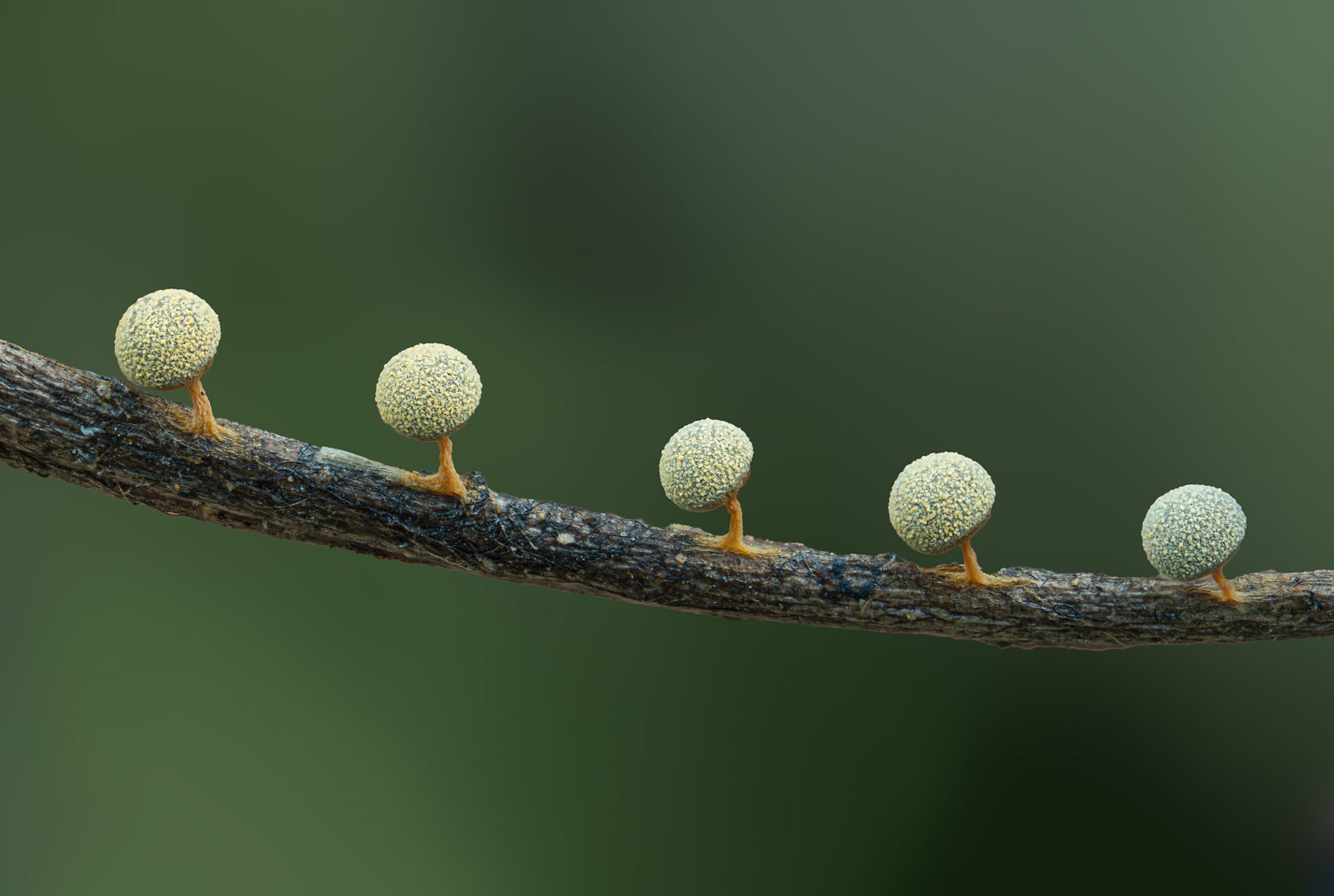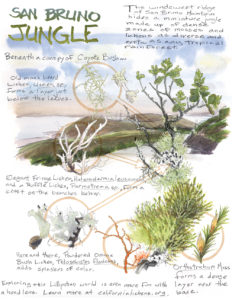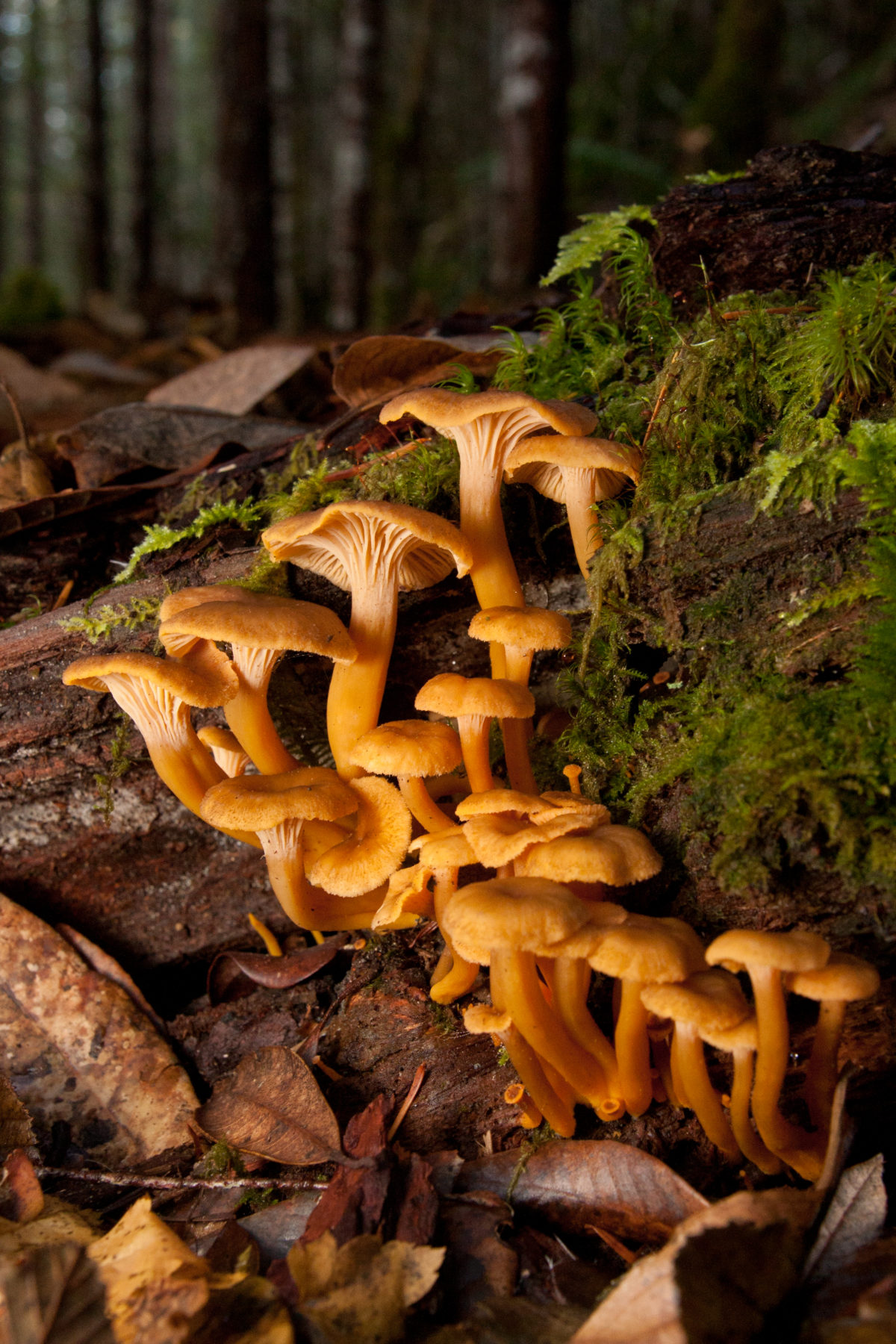You do not need to journey into the wilderness to find slime molds. A redwood forest is ideal, but those wet leaves in the gutter might be, too. Slime molds are all around you, waiting for the rains to help them emerge.
Once the rainy season begins, look for the damp places. Your quarry will be visible to the naked eye when it joins forces by the thousands to coalesce into blobby shapes—like undercooked pancakes, left on logs at Tilden Park, or a lattice of high-gloss mustard, in the hills near Mount Tam. Their floppy stasis is deceiving—on time-lapse videos, they bubble and blorp across the screen like tiny horror-movie monsters. They’re sometimes predators, sometimes farmers, moving at a timescale too slow for us to perceive, but fast enough to capture the bacteria they feed on.
Bring a magnifying glass on your slime mold quest, if you can. Other stages of slime mold life are small and difficult to see: pin-size spheres of white, yellow, orange, or pink, like Craterium minutum or Leocarpus fragilis—nonpareils escaped from a bakery and living free and wild, in the undergrowth of parks across the Bay Area. Still others have lush, hallucinatory forms that are only perceptible under a microscope. Most are no taller than a millimeter. A slime mold might look like it is infesting a plant, but it is a benign presence—the amoeboid equivalent of pausing on a park bench before continuing onward.
Slime mold is “cosmopolitan,” a glamorous term simply meaning it exists in every environment around the world that is hospitable to it. Unlike rats or people, two other cosmopolitan species, slime mold likely did not spread from continent to continent—rather, it made an appearance long before the continents separated, roughly a billion years ago, hundreds of millions of years before plants or animals. There’s a phrase that goes, “as old as dirt.” Slime molds are that old.
There are thousands of individual slime molds in a pinch of dirt. If you take a piece of decaying wood or a well-aged cow patty and store it in a moist environment, they’ll most likely grow to the point where they become visible. Be sure to keep them fed. In nature they live on bacteria and fungal spores and other tiny things. As pets and research subjects they show a particular fondness for oatmeal. If you stop feeding them or if they sense a better life elsewhere, they will make a break for it and ooze away, albeit very, very slowly.
Slime molds have been classified as plants, as animals, and as fungi, but they are officially protists. They are still extremely easy to mistake for fungi (a frequent comment on the Slime Mold Identification and Appreciation Facebook page is “That’s a fungus”). The increasing availability of genetic sequencing via polymerase chain reaction machines has changed all that—slime molds are more closely related to amoebas like Giardia than they are to a patch of chanterelles.
Slime molds are most internet-famous for solving mazes, and for having 720 sexes. The 720 sexes fact comes from slime molds’ ability to fuse, smushing two single-celled bodies into one new single-celled creature. Their sexual compatibility depends on three genes that have, respectively, 16, 15, and three loci—which, mathematically, can combine in 720 different ways. What sex even means to an organism so liquid that it doesn’t have internal cell walls remains a mystery.
As for the mazes, since the prize for completing one is food, they show off a slime mold’s particularly hungry form of intelligence. Physarum polycephalum, the most common slime mold used in such experiments, will slime all potential routes and then winnow them down to the most efficient one. In labs, slime molds have proved better than ants (or people) at choosing the most nutritious food on offer. Slime molds have different personalities, in terms of eating habits. When confronted with two food sources, P. polycephalum may expand two long blob-arms and stuff itself from both at once. When two P. polycephalum individuals do merge into a new single-celled organism, that new cell seems to have some memories of bad meals past. If one parent learned to steer around salt or powdered caffeine to get to something better, its descendant will, too.
Hundreds of millions of years ago, our ancestors diverged from these primeval cousins of ours—sliming, then crawling our way to complexity: to popsicles and Moby-Dick, automated phone systems and the military-industrial complex. Slime molds model a different lifestyle—one where it is possible to be simple, fluid, and ravenous, and to thrive nonetheless.





